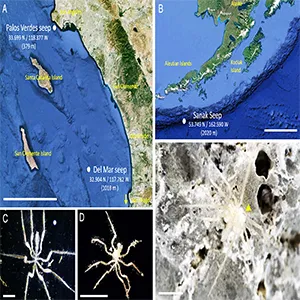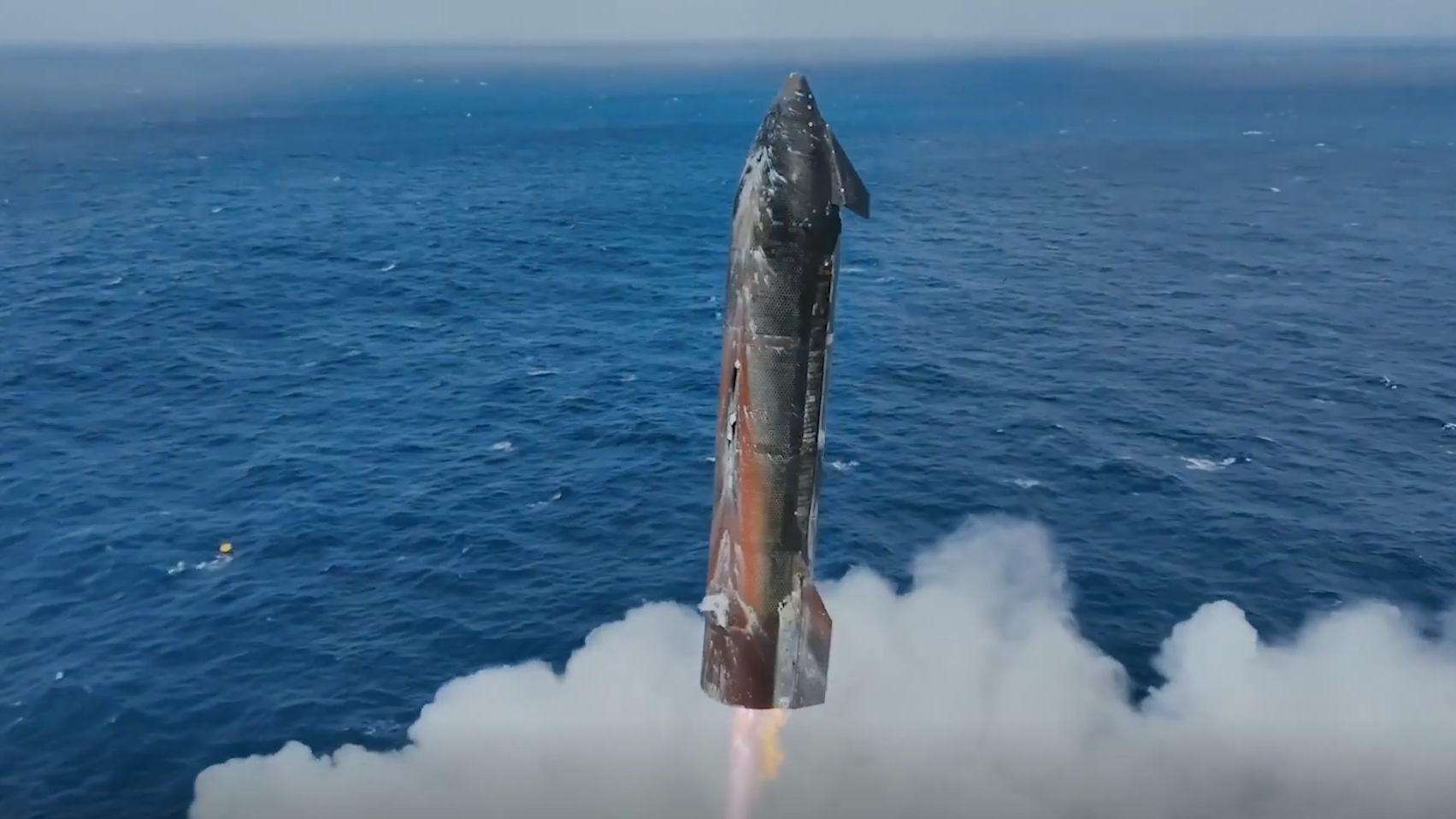A dull stretch of silty seafloor off Southern California hides a surprise that would fit on a pencil eraser. Here, three new sea spiders in the genus Sericosura have learned to live on the greenhouse gas methane, thanks to a cloak of bacteria that carpets their limbs.
The work comes from marine biologist Shana Goffredi at Occidental College, whose team used remotely operated vehicles to collect the translucent arachnid cousins nearly 3,350 feet down. They then tracked carbon from labeled methane directly into the spiders’ tissues.
Deep, dark habitat
Light never reaches the Pacific methane seep, a spot where gas seeps through cracked sediment instead of burning in kitchen stoves.
In such places, free-living microbes turn methane and oxygen into simple sugars, laying the energy groundwork for whole communities.
Most animals here hunt or filter food, but the palm-sized Sericosura do neither. Their proboscis lacks the piercing teeth used by other sea spiders to drain jellyfish, so the team looked for a different menu.
Sea spiders and a methane buffet
Under an electron microscope, each spider leg resembles rough sandstone, dotted with thousands of tiny “volcano” pits.
Every pit holds a tuft of methanotroph cells encased in sticky gel, stacked like poker chips and spaced about five-hundredths of an inch apart.
The pattern is no accident. NanoSIMS imaging showed the bacteria gulping heavy-carbon methane and multiplying rapidly.
They then disappeared in patches, leaving clear tooth marks that match the spider’s flexible mouthparts.
“Just like you would eat eggs for breakfast, the sea spider grazes the surface of its body, and it munches all those bacteria for nutrition,” said Goffredi.
Methane fuels spider meals
Methanotrophs oxidize methane, releasing both carbon dioxide and a dash of methanol.
Secondary bacteria on the spider, mainly Methylophagaceae, slurp the methanol, forming a two-tier farm much like the mixed crops found on deep-sea tubeworms and yeti crabs.
Labeling experiments ran for five days in chilled seawater. By then, carbon from the methane had already reached the spider’s digestive diverticula.
This proved that the animal swallows its tenants rather than absorbing leftovers through its skin.
Spider eggs carry bacteria
Male Sericosura brood strings of eggs around their knees like charm bracelets. Goffredi’s team noticed the same bacterial mix coating the egg sacs, suggesting parents seed their young with food before the larvae ever crawl.
Vertical transfer of symbionts is common in deep-sea mussels and hydrothermal vent crabs.
Finding the pattern in a pycnogonid hints that inheritance of microbiomes may be older and more widespread than researchers thought.

“Even if 80 percent of the population are eaten, it’s worth it for the 20 percent to keep surviving and reproducing,” said Max Planck symbiosis expert Nicole Dubilier, who reviewed the data but was not involved in the fieldwork.
Methane spiders reshape theory
The fact that sea spiders graze their own bodies for fuel points to an overlooked path in the global carbon cycle.
Until now, most methane-fed ecosystems were thought to rely on internal symbionts or sediment-dwelling microbes, not animals farming bacteria on their skin.
Because methane seeps span thousands of miles of coastline, even small-bodied grazers like Sericosura could collectively process meaningful amounts of gas before it escapes to the surface.
That adds a new twist to how scientists model methane flux in oceanic systems and may influence how future conservation zones are drawn.
Small farmers, global effects
Each bacterial layer that ends up inside a spider is a layer that never reaches the atmosphere as methane.
Deep-sea sponges at asphalt seeps can already lock away up to 22 percent of local emissions through similar partnerships.
Hundreds of seeps dot the Pacific margin, and many companies have slated them for mineral surveys.
Because the newly described spiders sit in pockets no bigger than a two-car garage, any disturbance risks wiping out entire populations and their methane filters overnight.
Goffredi hopes the unique chemical signature in the spiders’ bodies will help crews spot hidden methane seeps before drilling starts.
This method has already helped identify other deep-sea hotspots, like sponge fields and tubeworm colonies.
Methane may spell trouble in the sky, yet in the deep it fuels intricate symbiosis that strings bacteria, spiders, and climate together.
Tiny as they are, the Sericosura colonies remind us that saving obscure life forms can pay off far above their dark, pressurized homes.
The study is published in Proceedings of the National Academy of Sciences.
—–
Like what you read? Subscribe to our newsletter for engaging articles, exclusive content, and the latest updates.
Check us out on EarthSnap, a free app brought to you by Eric Ralls and Earth.com.
—–
Source link


